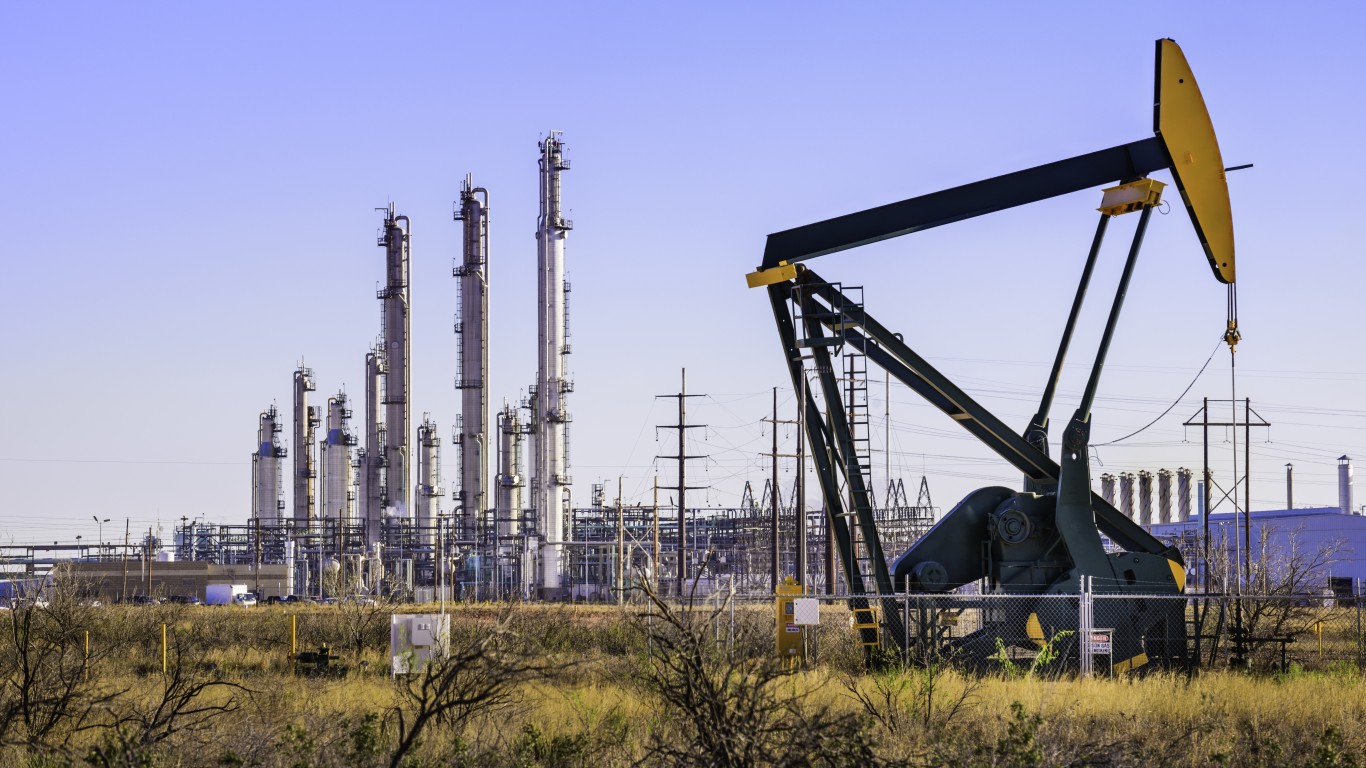
In a statement posted Wednesday by Saudi Arabia’s official news agency, Saudi Aramco officials announced that the kingdom’s proved oil and gas reserves rose to 266.3 billion barrels and 302.3 trillion cubic feet, respectively. The increase, calculated at the end of 2017, was certified by Dallas-based consulting firm DeGolyer and MacNaughton in 2018.
Thursday morning, consulting firm IHSMarkit announced an estimate of 16 billion barrels of oil and more than 200 trillion cubic feet of natural gas un-risked technically recoverable resources in the Anadarko Basin that comprises the Texas and Oklahoma panhandles into eastern Oklahoma and north to around Topeka, Kansas. The primary plays in the region are known as the STACK (Sooner Trend, Anadarko, Canadian, and Kingfisher) and SCOOP (South Central Oklahoma Oil Province) plays.
Last month, the U.S. Geological Survey (USGS) more than doubled its estimate of technically recoverable reserves in the Wolfcamp basin of the Permian Basin to 46.3 billion barrels of oil and 281 trillion cubic feet of natural gas. The previous estimates were 20 billion barrels and 16 trillion cubic feet of natural gas. The Permian Basin is centered around Midland-Odessa, Texas, and stretches into southeast New Mexico.
And in a less dramatic increase, BP announced Tuesday that it had discovered 1 billion additional barrels of oil in place at its Thunder Horse platform in the Gulf of Mexico.
All but 5.4 billion barrels of the Saudi reserves are owned by the kingdom. These barrels are owned by Kuwait in a region known as the Partitioned Zone that the two countries share equally.
All the Saudi barrels are classified as “proved,” which means that they can be produced with a profit at today’s costs of extraction and market prices. The technically recoverable reserves identified in the Anadarko Basin and the oil in place found in the Gulf of Mexico are estimates of all the oil available with no high level (90%) of confidence that it can be economically produced.
The astounding increase announced for the Anadarko Basin is especially noteworthy. The last U.S. Geological Survey assessment of the area we could find was completed in 2010 and reported a mere 495 million barrels of oil and natural gas reserves of 27 trillion cubic feet. John Roberts, who co-authored IHSMarkit’s research, said:
The Anadarko Basin has long been a major contributor to U.S. production, but it is just getting started in terms of delivering on its unconventional production potential. … As it stands now, only about 20 percent of the Anadarko Basin’s STACK ‘sweet-spot’ locations have been drilled or developed. The play is still in its early stages of unconventional development. We can easily envision an additional 4,000 to 5,000 horizontal wells drilled.
West Texas Intermediate (WTI) crude oil traded at around $52.07 a barrel in the late morning Thursday, down about 0.6% from Wednesday’s settlement price of $52.36. Brent crude for March delivery traded down about 3% at $61.28.
Credit Card Companies Are Doing Something Nuts
Credit card companies are at war. The biggest issuers are handing out free rewards and benefits to win the best customers.
It’s possible to find cards paying unlimited 1.5%, 2%, and even more today. That’s free money for qualified borrowers, and the type of thing that would be crazy to pass up. Those rewards can add up to thousands of dollars every year in free money, and include other benefits as well.
We’ve assembled some of the best credit cards for users today. Don’t miss these offers because they won’t be this good forever.
Flywheel Publishing has partnered with CardRatings for our coverage of credit card products. Flywheel Publishing and CardRatings may receive a commission from card issuers.
Thank you for reading! Have some feedback for us?
Contact the 24/7 Wall St. editorial team.
 24/7 Wall St.
24/7 Wall St.


